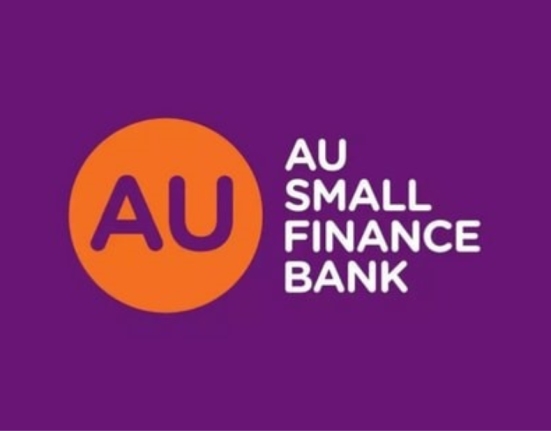April 5 couldn’t have been easy. Panic consumed the day after a near 6% S&P sell-off. But the American College of Financial Services’ Advising Through Uncertainty Study has found that most financial professionals did their job in the days and weeks later — persuading their clients to stay calm and stay invested.
Yet the study also indicates statistically significant divergences between portfolio change requests, anxieties and areas of focus between the clients of professionals who self-select as investment managers vs financial planners, as well as the American College of Financial Services designees vs non-designees.
Before I let the data weave the story, here’s the main takeaway: The value of an investment manager cloaked as a financial adviser is the portfolio (and for years, the access to capital markets it brought).
Sign up for Kiplinger’s Free E-Newsletters
Profit and prosper with the best of expert advice on investing, taxes, retirement, personal finance and more – straight to your e-mail.
Profit and prosper with the best of expert advice – straight to your e-mail.
The Kiplinger Building Wealth program handpicks financial advisers and business owners from around the world to share retirement, estate planning and tax strategies to preserve and grow your wealth. These experts, who never pay for inclusion on the site, include professional wealth managers, fiduciary financial planners, CPAs and lawyers. Most of them have certifications including CFP®, ChFC®, IAR, AIF®, CDFA® and more, and their stellar records can be checked through the SEC or FINRA.
No matter the role a financial professional plays in a portfolio’s success — akin to a professional football coach — they will garner the praise during an extended bull market and take it on the chin during inevitable market contractions.
The value of the financial planner is generally more forward-looking and incorporates services beyond asset growth (or decline), including the tangible value provided through estate planning, income planning, charitable planning and tax planning, to name a few.
Simply put, a true comprehensive financial planner can weather market gyrations because their 1% asset fee, or corresponding planning fee, is tied to tangible value outside what’s discussed on Squawk Box each morning.
An investment manager has a much more difficult story to tell if market volatility becomes something more prolonged, even though they had no sway in a presidential administration’s policy choices.
The all-weather financial planner
Part of a financial adviser’s value is in the positioning. Framing market drops as both an opportunity to buy at a discount and “like any other day” in a 30-year financial plan helps put short-term portfolio performance in context.
The American College of Financial Services’ study shows that advisers who always focus on financial planning are significantly less likely to field client requests to make portfolio changes (23%) than those who focus more on investment management (43%).
This paradigm circles back to a common value exchange — if a singular value erodes, that’s all the client can focus on. If the value is derived in multiple ways, losing one, hopefully briefly, can be more effectively explained.
It’s also, ironically enough, a better story to tell in attracting the assets that make up individual portfolios.
In its report Financial Planning: Fueling Client and Business Growth, Cerulli Associates found private wealth managers who offer a “complete suite of financial planning and investment services including charitable giving, stock option planning, and complex trust and estate planning” attracted clients with assets under management (AUM) more than triple those of investment planners ($1.8 million vs $600,000 on average, respectively).
Why do research study after research study find that a broader story resonates? One potential theory is one opined time and again by my former boss, Ed Slott, CPA, America’s IRA expert.
He’d start seminar after seminar for financial advisers with the calculus, “The clients you want, the ones with money, they already have it.”
Those clients aren’t looking for the next hot stock or the active management that beats the market. They want the planning value that makes that portfolio, well-earned over decades, resilient.
Looking for expert tips to grow and preserve your wealth? Sign up for Building Wealth, our free, twice-weekly newsletter.
It’s not how much an adviser makes a client that demonstrates value that supersedes market volatility, but how much the adviser helps the client keep (tax planning), make last (income planning) and pass on (charitable, legacy, estate planning) that delivers on that 1% AUM or planning fee.
The data dictates the right direction
The Advising Through Uncertainty Study positions the all-weather financial professional as one who provides broad and specialized financial planning services — including those for which advisers attain specialized knowledge.
Their clients exhibit less dramatic shifts in their feelings and behaviors during and/or immediately after market shocks, compared to those who rely on an adviser solely for investment management. In turn, not only are their clients less anxious and reactionary, but so are these financial planners.
The survey asked advisers where they usually focus their attention, unrelated to recent uncertainty. Financial planners mostly or entirely focus on planning, while investment managers mostly or entirely focus on the portfolio.
The data analyses compare these two segments and also examine key areas in which financial professionals who hold American College of Financial Services designations (i.e., designees) — such as the Chartered Financial Consultant® (ChFC®), Retirement Income Certified Professional® (RICP®) and Chartered Advisor in Philanthropy® (CAP®) — differ from advisers without designations (i.e., non-designees).
The study found that 45% of investment managers fielded client inquiries during this period of market uncertainty compared to 33% of financial planners.
American College of Financial Services designees also experienced fewer portfolio revision requests (27%) than non-designees (37%); and only 26% of designees said client focus has centered on investments, vs 37% of non-designees.
Key next steps for financial professionals
Clients will naturally examine the value exchange with a fine-tooth comb when portfolios decline. Those portfolios are built on sacrifice, come attached to meaningful family legacies or philanthropic goals, and are the drivers of desired retirement plans.
When the client thinks — or directly or indirectly — asks, “What am I paying you for?”, take action today to have a confident answer tomorrow.
Here are a few next steps:
Consider the business case for true comprehensive planning, which requires not just service offerings, but the expertise to back them up.
Adviser value is paid out on complexity, so having a true understanding of when and how to apply intricate concepts and communicate them effectively is what the service is really all about.
Differentiation comes through competence and confidence. The survey revealed that, compared to advisers with no designations, financial professionals with American College of Financial Services designations were:
- Significantly less likely to say their clients were turning their focus to investments
- Significantly less likely to receive client requests to change their investments
- Significantly less likely to describe their clients as anxious
This suggests not just an understanding, but also an acceptance from these clients to withstand fluctuating investment performance.
Put market volatility and economic uncertainty in context. Simply put, communicate the complex like it’s simple.
Based on historical market performance, someone who started investing in their early 20s and planned to retire in their late 60s or early 70s (a 50-year investment time horizon) would live through about 14 bear markets, as Hartford Funds reminds us all in its 2025 Client Conversations.
Competence is powered by the curiosity — and action — of lifelong learning. Communication is honed through both the confidence of doing it before, and the necessary shadowing of mentors and/or peers.
The powerful combination of competence, confidence and communication takes time, but if the Advising Through Uncertainty Study is any indication, it pays powerful dividends before, during and after market volatility.







